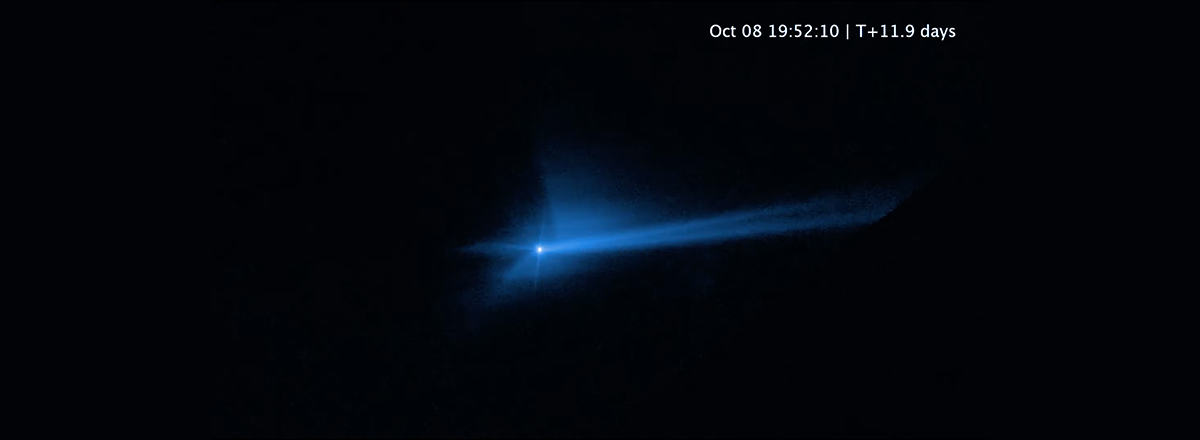Hubble Space Telescope Captures Aftermath of NASA's DART Asteroid Impact
The newly released movie begins roughly 1.3 hours before the DART impact, then shows the system of two asteroids two hours after the event, with debris moving at speeds fast enough to overcome the gravitational pull of the asteroid system.

NASA's Hubble Space Telescope captured all the consequences of DART's collision with an asteroid. It detected changes in asteroid Dimorphos' tail, which was previously hit by the DART spacecraft to alter its orbit as part of a planetary defense test.
NASA's Double Asteroid Redirection Test (DART) mission became the first-ever successful attempt to change the trajectory of a celestial body in the history of humanity.
The published time-lapse movie shows hour-by-hour changes as debris and dust flew into space at high speed. The impact sprayed over 1,000 tons of dust and rock off the asteroid and sent it into space.
The newly released movie begins roughly 1.3 hours before the DART impact, then shows the system of two asteroids two hours after the event, with debris moving at speeds fast enough to overcome the gravitational pull of the asteroid system.
The debris sprayed away from the asteroid in the shape of a cone and were later swept back into a comet-like tail that split into two parts.
The effects of the impact have yet to be studied. For example, it is unknown why the tail split into two separate streams for a few days.

